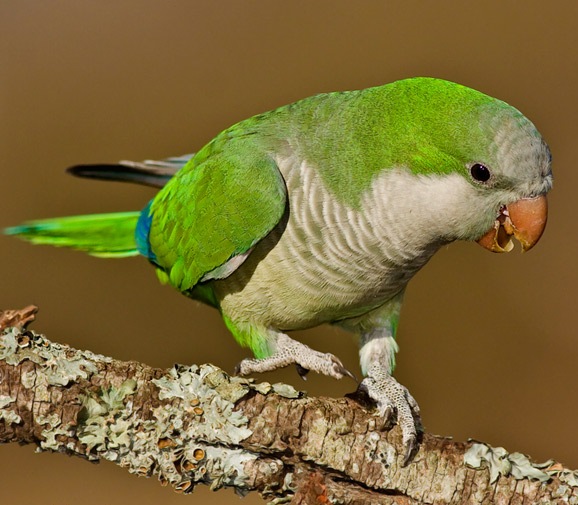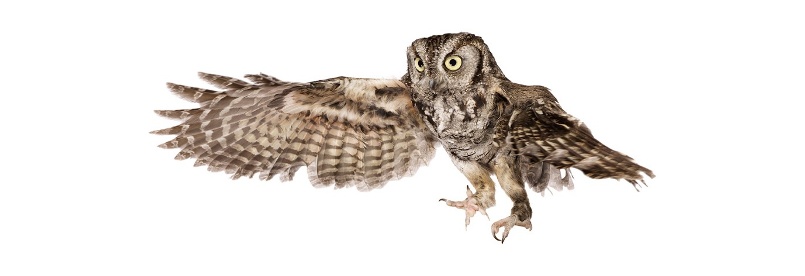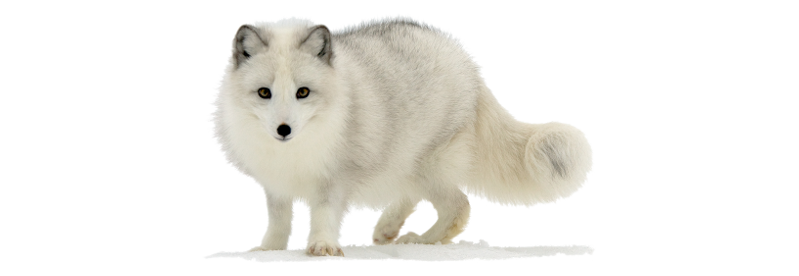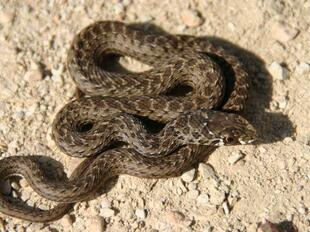
Monk parakeet, orQuaker parrot(Myiopsitta monachus)
Phylum —chordata
Class — aves
Order — psittaciformes
Family — psittacidae
Genus – myiopsitta
Appearance
A Quaker parrot is a medium-sized bird, about 11 to 13 inches long from head to the tip of the long, tapered tail. The Monk parakeet is a bright-green parrot with a greyish breast and greenish-yellow abdomen.
Habitat
Monk parakeets are found in Argentina and the surrounding countries in South America.
Behavior
Monk parakeets are highly gregarious birds that live and nest in colonies. They are diurnal and spend most of the day foraging and preening each other. To get their food these energetic birds climb among branches using their beaks or may drop to the ground to pick seeds or fallen berries. At dusk, they come back to their communal roost site to sleep. Monk parakeets are very noisy.
Diet
Monk parakeets are herbivores. They mainly eat seeds of various plants and will also consume fruits, berries, leaf buds, blossoms, nuts, and insects.
Reproduction
Monk parakeets are monogamous and form strong long-lasting pair bonds. They breed between October and February. These birds build a stick nest, in a tree or on a man-made structure, rather than using a hole in a tree. They often breed colonially, building a single large nest with separate entrances for each pair. Females lay 5 to 12 white eggs which usually hatch in about 24 days. The chicks are altricial; they hatch blind and are covered in yellowish down. Both parents feed their young until they are ready to leave the nest that usually occurs at 40-50 days after hatching. Reproductive maturity is reached when young birds are 2 years old.
The lifespan of Monk parakeets has been given as 15–20 years or as much as 25–30 years.
In captivity
Quakers are very active birds and need to have an adequate amount of space to play. Their cage needs to be a minimum of 18 inches square, though they'll do even better in a larger enclosure. Make sure it's toughly constructed. These birds not only like to chew, but they are also well known for learning how to open the cage and escaping. Put a bowl with fresh water inside the cage for a birdbath; this can provide hours of entertainment, exercise, and mental stimulation.
Quaker parrots can get aggressive if they feel their home is threatened. Since they do take pride in their home, they can become possessive over their cage. If you are introducing another quaker to the one you already have, allow the two to get acquainted in separate cages and form a bond first. Otherwise, the other bird will seem like an intruder. They will fight and even kill to protect their home.If you have a dog or cat, you will also want to keep an eye on your quaker. They can be somewhat fearless and try to take on even the biggest dogs.
Provide your Quaker parrot with plenty of toys and a play gym as a place to burn off their energy and play. Quaker parrots need at least two hours of outside-of-the-cage time in a bird-safe room. Close windows and doors, turn off ceiling fans, block fireplaces, and remove potentially toxic plants and other pets from the room. Balls, bells, and smaller chew toys will engage and interest your bird. These brilliant birds will often have fun with puzzle toys.
Allow Quaker parrots to exercise their nest-building instinct. Your bird may try to weave things into the bars of its cage or may choose to begin nesting in a corner of your house using random items it finds. Make sure you supervise these curious birds during the time they're out of the cage.
Quaker parrots are known to be excellent eaters and their diet should include the fruits, vegetables, and nuts they typically eat in the wild.As a captive bird, their main diet item should be a high-quality, commercially formulated pellet mix. Provide a variety of fresh fruits and vegetables, leafy greens, nuts, and healthy table food. Root vegetables, peppers, and colorful produce are critical in their diets. Feed these birds about 3 tablespoons of pellets per day and offer at least a 1/4 cup of fresh fruits and vegetables in the morning. Discard the fresh foods that are not eaten by the end of the day. You can offer a second feeding of fruits and vegetables a couple of hours before bed.
Some quakers tend to become overweight if allowed to indulge in too many fattening nuts and seed treats like sunflower seeds, peanuts, and millet.
As with all pet birds, fresh water should always be available. Never give foods that are toxic to birds like avocado, chocolate, and coffee.
 Russian
Russian
 English
English
























